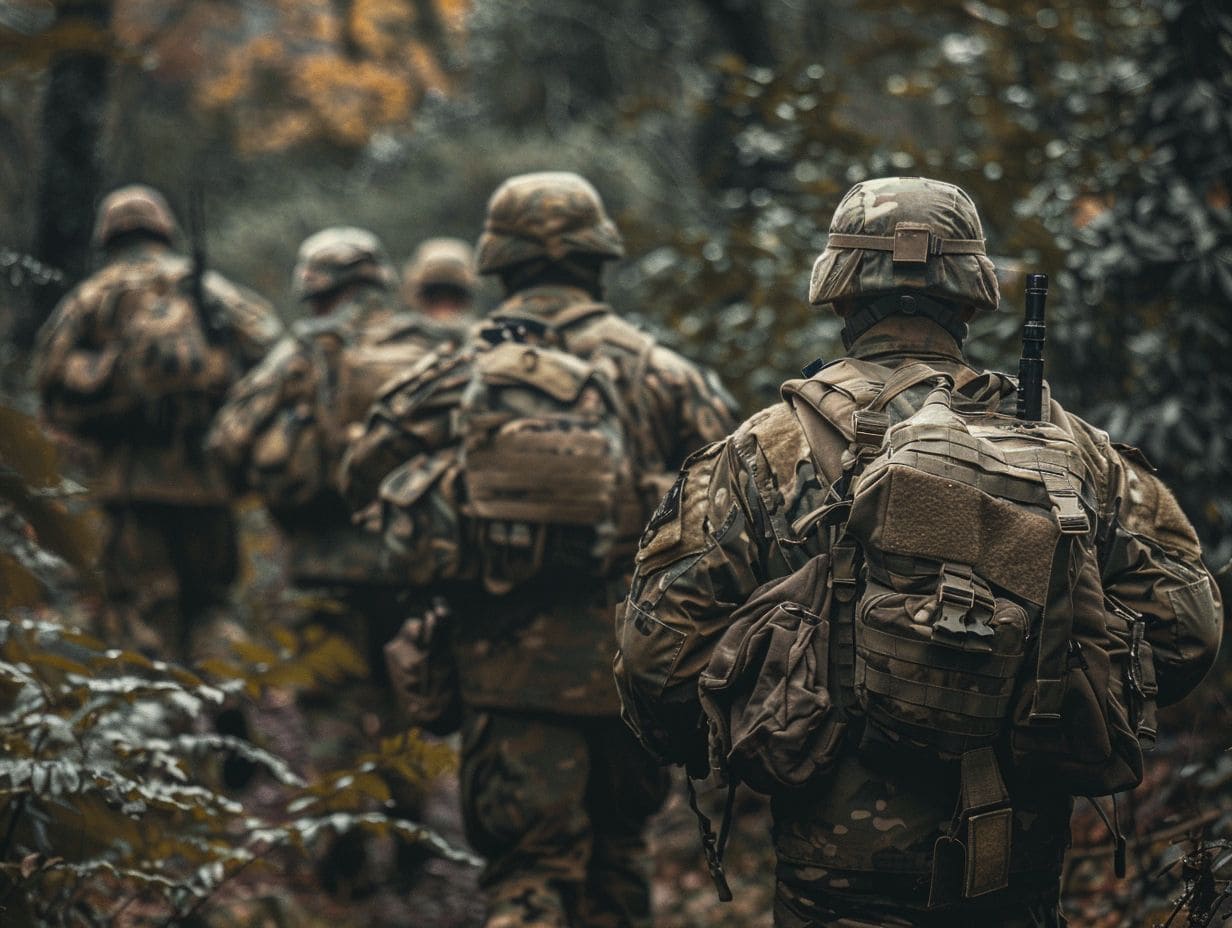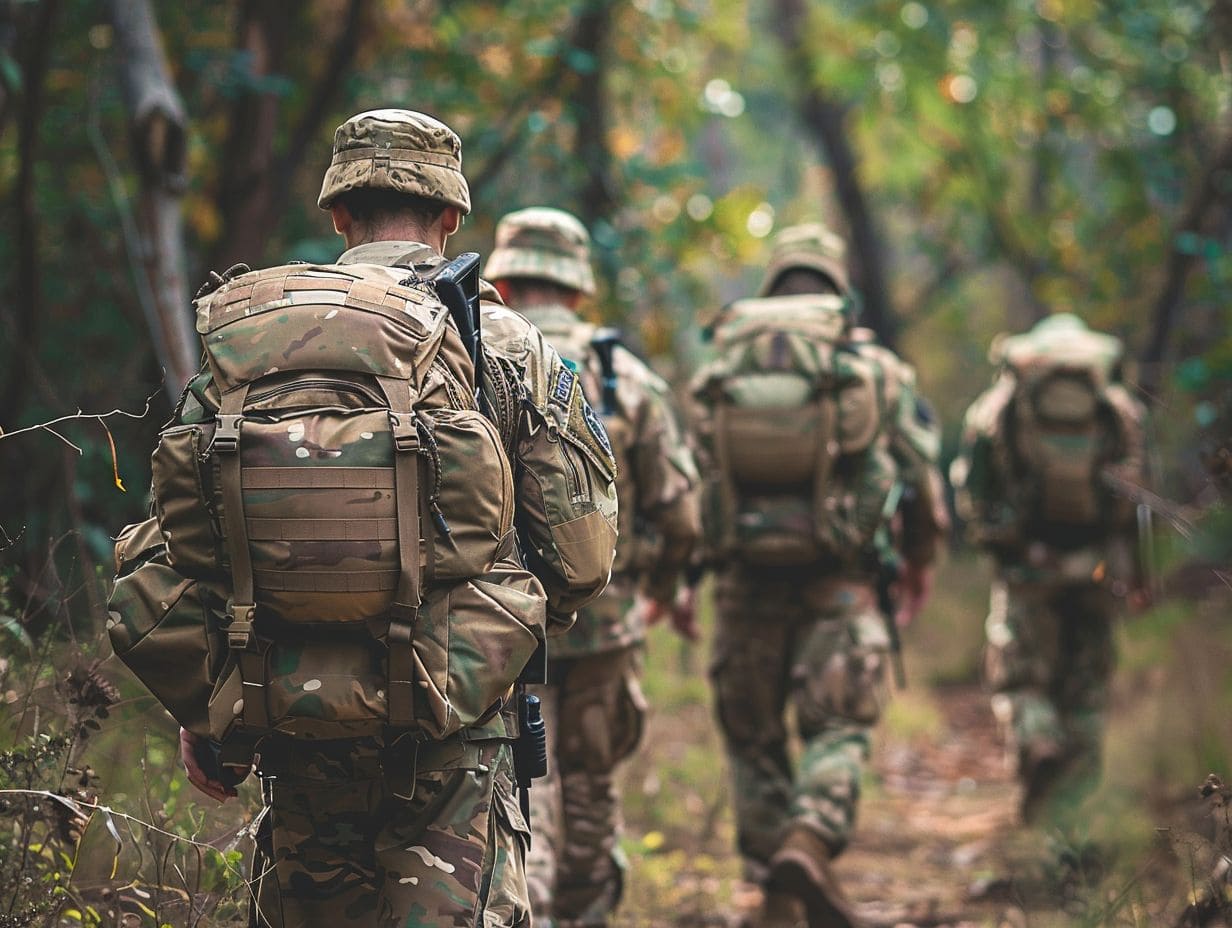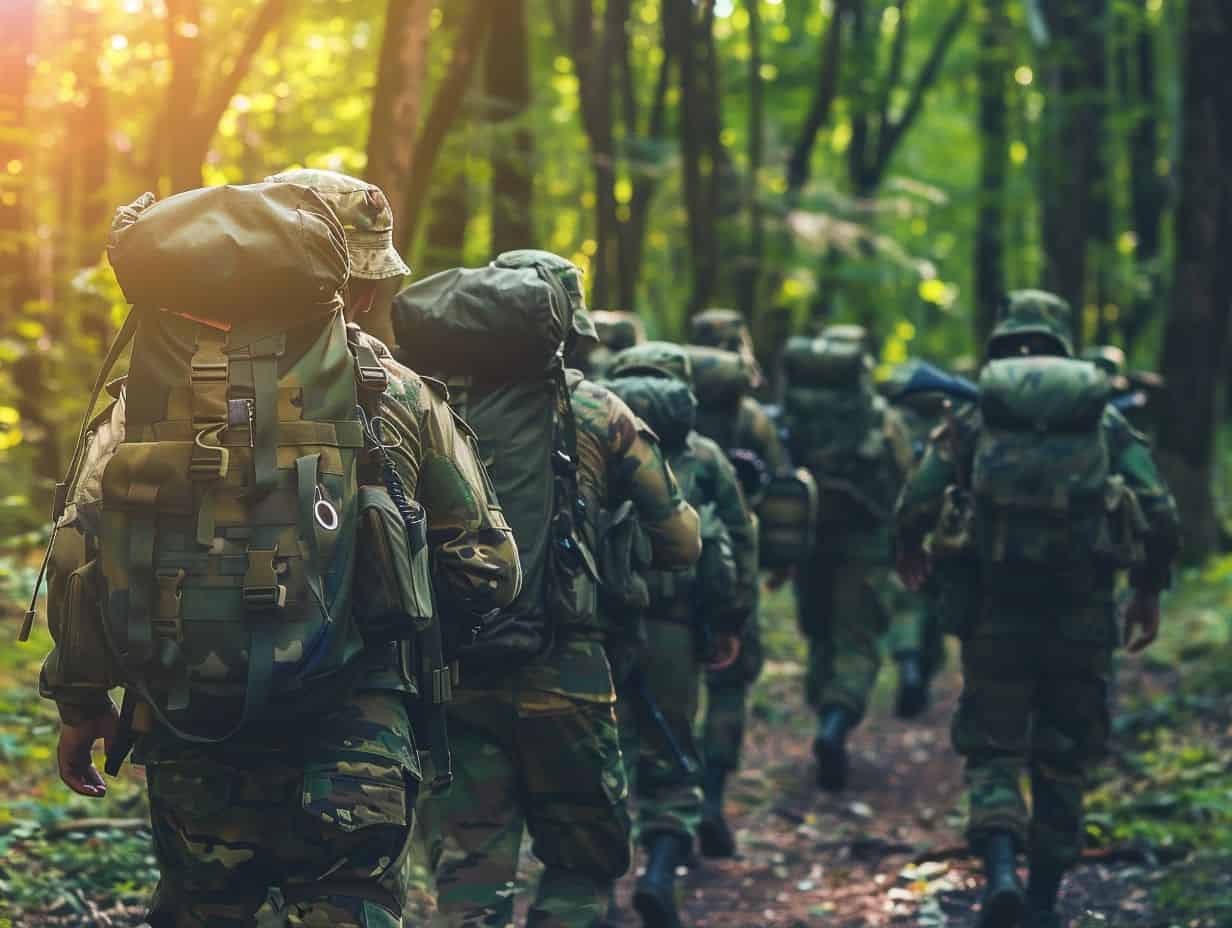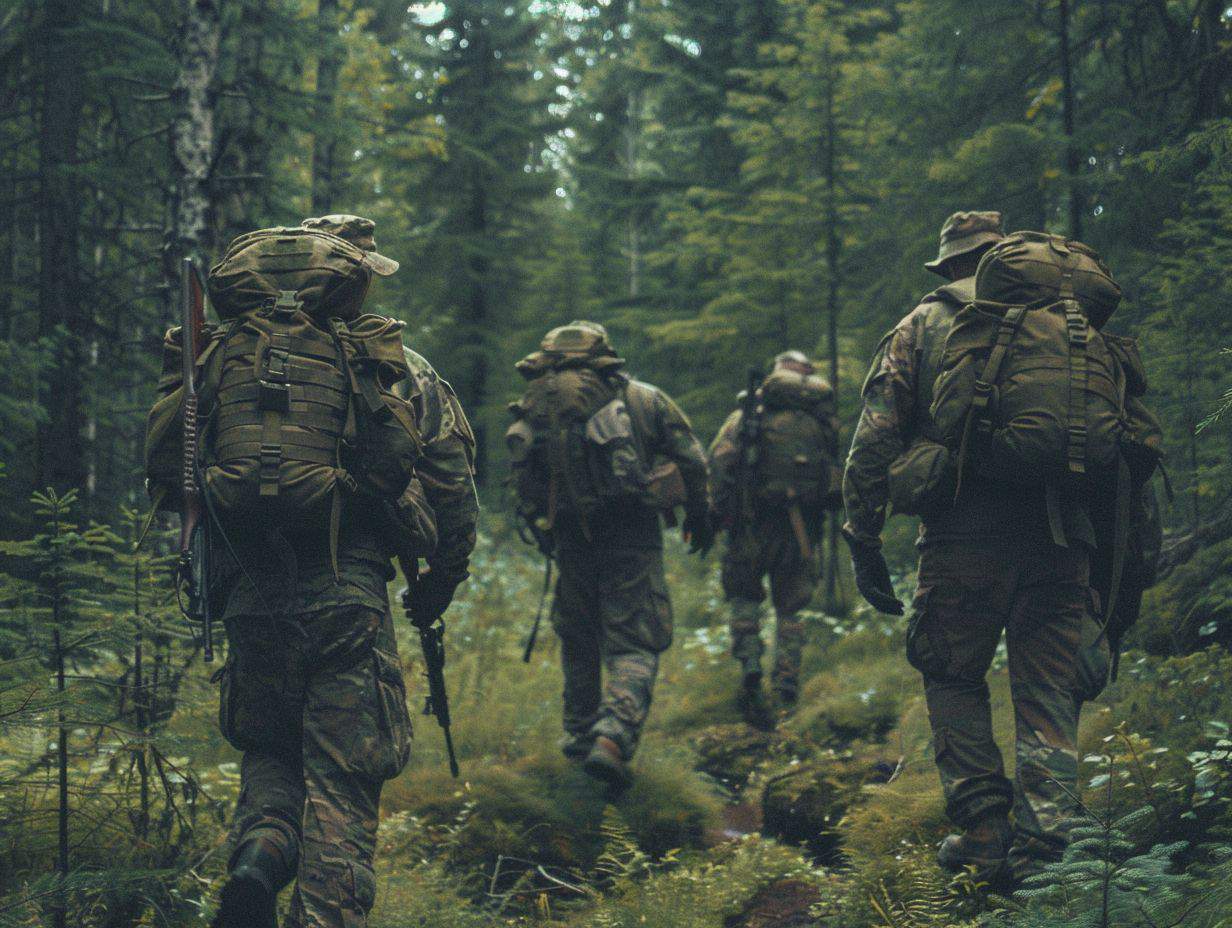MREs, which stands for Meals Ready-to-Eat, play a vital role in military training by providing soldiers with essential nutrition while they are in the field.
This article will cover the history of MREs, their advantages and challenges in military training, the components and nutritional content they offer, and a comparison between MREs and regular meals.
Additionally, we will review the preparation and consumption of MREs, the various types available, and the safety measures to take into account when consuming them.
Furthermore, alternatives to MREs will be explored, along with an analysis of their pros and cons.
Explore with us as we delve into the realm of MREs and their significance in military operations.
What Are MREs?
MREs, or Meals Ready-to-Eat, are important items used in military training and field operations. These portable food packages are designed to provide sustenance and nutrition in combat and survival situations. They are specifically created to meet the demanding requirements of military personnel working in challenging field conditions.
Each MRE includes a complete meal with a balanced combination of proteins, carbohydrates, and fats to support the body during strenuous activities. MREs also come with essential survival tools like flameless heaters for heating meals without the need for fire, which is beneficial for covert missions where maintaining stealth is critical.
Their convenience and extended shelf life make them valuable resources in ensuring that soldiers have adequate nutrition and energy to carry out their tasks effectively.
History of MREs
The history of MREs can be traced back to the early development of emergency rations for military personnel. These rations have undergone changes over time to improve shelf life, caloric intake, and overall suitability for different environments.
Initially, MREs were basic provisions intended for short-term sustenance in the field. Through advancements in food preservation technology and nutritional science, MREs now feature longer shelf lives, higher caloric content, and increased durability. These enhancements have made them better suited for extended deployments and emergency situations. The range of menu choices and packaging improvements have transformed MREs into a convenient and effective solution for ensuring individuals receive the necessary nutrients and energy to sustain themselves in challenging conditions.
Why Are MREs Used in Military Training?
MREs are important in military training because they are effective in sustaining soldiers during training exercises and tactical operations, providing the necessary nutrition and hydration for optimal performance.
They are specifically formulated to offer a balanced combination of carbohydrates, proteins, and fats to meet the high energy requirements of soldiers, particularly during strenuous physical activities. In situations such as demanding training exercises or combat scenarios where access to regular food is limited, MREs serve as dependable sources of sustenance. The compact and lightweight design of MREs makes them easy for soldiers to carry in their gear without adding unnecessary weight during intense training sessions.
What Are the Benefits of Using MREs in Military Training?
The advantages of using MREs in military training are numerous. They provide soldiers with quick sustenance through ready-to-eat meals that are specifically designed for field conditions. These meals are lightweight and require minimal field equipment for preparation.
MREs are engineered to endure various environments, guaranteeing that troops receive essential nutrients regardless of where they are stationed. In situations where traditional cooking equipment may not be practical, MREs provide a straightforward solution. The compact packaging of MREs makes them easy to transport, allowing soldiers to concentrate on their mission without the burden of bulky food supplies.
Additionally, the long shelf life of MREs ensures they remain edible for extended periods, making them well-suited for prolonged field operations.
What Are the Challenges of Using MREs in Military Training?
Despite the benefits, the use of MREs in military training comes with challenges such as the need for a variety of energy bars, lightweight packaging, and nutrient-dense options to accommodate diverse military personnel.
These challenges are important factors to consider in order to improve the effectiveness of military training programs. Energy bars play a critical role in providing quick bursts of energy during intense physical activities, highlighting the importance of having a range of options to meet different preferences and dietary requirements within the military ranks. Lightweight packaging is crucial for ensuring easy transportation and storage, particularly in demanding field conditions where space and weight are limited. Providing nutrient-dense meal choices is vital for maintaining the energy levels and overall health of military personnel across a range of roles and responsibilities.
What Are the Components of an MRE?

The components of an MRE typically consist of various elements that are crucial for survival and sustenance during simulation exercises and tactical operations. These components often encompass tactical gear, camouflage items, and dehydrated food that are designed for compact storage.
Tactical gear, such as multi-tool knives, compasses, and paracord, can play a vital role in navigating challenging terrains and carrying out a variety of tasks. Camouflage materials are used to help troops blend into their surroundings, providing essential cover and concealment in high-stakes situations. Dehydrated food serves as a lightweight and long-lasting solution, ensuring that individuals have access to nutrition even in remote locations or during extended missions. When combined, these components synergistically work to improve readiness and effectiveness in demanding scenarios.
What Is the Nutritional Value of an MRE?
An MRE is a meal replacement designed for field resupply to support combat readiness by meeting the specific nutrition requirements of military personnel.
These compact and convenient meals are carefully formulated to provide a balanced mix of nutrients, including protein, carbohydrates, fats, vitamins, and minerals necessary for sustaining energy levels and enhancing physical performance in challenging operational environments. With a long shelf life and simple preparation, MREs offer a practical solution for troops who may lack access to traditional cooking facilities while on duty. This readiness staple is essential for maintaining the strength and endurance of service members during demanding missions and training exercises.
How Do MREs Compare to Regular Meals?
MREs have unique benefits compared to regular meals. They are designed for convenience, eliminating the need for field cooking, and are well-suited for wilderness survival due to their high energy content.
The convenience of packaged MREs makes them an excellent choice for outdoor activities such as camping or hiking, where traditional cooking may not be practical. With a long shelf life and easy portability, MREs offer a dependable source of high-energy sustenance in demanding conditions. Their compact size and range of meal options also make them a sensible option for emergency preparedness kits or disaster relief operations.
How Do You Prepare and Consume an MRE?
The process of preparing and consuming an MRE in combat zones or training scenarios involves straightforward steps, ensuring food availability and emergency readiness for military personnel in the field.
- Once soldiers acquire the MRE pouch, they typically open the packaging using the tear notches provided.
- The main entree is then heated using the flameless ration heater, which activates upon the addition of a small amount of water.
- While the entree heats up, the sides and snacks can be consumed directly from their individual pouches.
- Soldiers often carry their own utensils for convenience.
This process is designed to be efficient and nourishing, enabling troops to quickly refuel and continue their mission without compromising on sustenance.
What Are the Different Types of MREs?
There are various types of MREs designed for specific needs in different outdoor environments, military drills, and training regimens. These MRE varieties cater to diverse scenarios and nutritional requirements.
Whether troops are on an intense field exercise or stationed at a remote base, having the right MREs is crucial for sustaining energy and performance. From high-protein options for muscle recovery after strenuous workouts to lightweight meals for quick consumption during fast-paced training, the range of MRE types available ensures that soldiers can meet their dietary needs in any setting. Meal planning plays a vital role in ensuring that soldiers receive the essential nutrients required to stay strong and focused in demanding operational environments.
What Are the Differences Between Civilian and Military MREs?

The distinctions between civilian and military MREs are based on their focus on specific survival skills, resource management requirements, and the critical mission success aspect in military ration packs.
Military MREs are meticulously planned to offer not only sustenance but also the essential energy and nutrients required for soldiers to perform their duties effectively in demanding environments. On the other hand, civilian MREs typically prioritize taste and variety over the high-calorie content necessary to sustain strenuous physical activity.
Military ration packs are compact and lightweight to accommodate soldiers carrying them easily during missions, whereas civilian versions may not be as portable or designed for extended use in challenging conditions.
Are MREs Safe to Eat?
MREs are carefully designed to ensure they are safe for consumption, incorporating survival techniques and principles of field medicine. They undergo thorough testing and evaluation by field training instructors during combat simulations.
The safety of consuming MREs is crucial, particularly in challenging environments where access to fresh food may be limited. The design of MREs includes features such as packaging that extends shelf life and protects against external elements. These meals are created with specific nutritional requirements tailored for individuals in high-stress situations. The addition of survival techniques like water purification methods and compact heat sources enhances their utility in emergency scenarios. Adherence to field medicine guidelines ensures that the contents are not only nourishing but also support health and provide energy for endurance in combat situations.
What Are the Safety Precautions When Consuming MREs?
Safety precautions when consuming MREs involve aspects such as food preservation, self-sufficiency practices, tactical nutrition awareness, and adherence to proper protocols during field exercises.
In terms of food preservation, ensuring that the MREs are stored in a cool, dry place away from direct sunlight is crucial to maintain their freshness and avoid spoilage. Self-sufficiency guidelines suggest being prepared with enough MREs to sustain oneself for the required duration, considering unforeseen circumstances.
Tactical nutrition principles underscore the significance of consuming the provided MREs according to the specified portions to maintain optimal energy levels during field exercises. Safety measures during field exercises include proper hand hygiene before consuming MREs to prevent contamination and following the recommended water intake to stay hydrated.
What Are the Alternatives to MREs in Military Training?
In military training, there are alternatives to MREs that are worth exploring. These options include edible insects, long-lasting food sources, specialized diets for special forces, and traditional meal preparations in military camps.
In recent years, there has been a growing interest in incorporating edible insects as a sustainable and nutrient-rich option for military personnel. Edible insects are not only environmentally friendly but also packed with protein, vitamins, and minerals essential for physical performance.
Long-lasting food supplies such as dehydrated meals and ready-to-eat canned foods have become popular choices due to their convenience and durability in harsh training environments. Special forces often follow tailored dietary plans to meet their specific energy and nutritional requirements, optimizing their performance during intense missions.
Traditional meal preparations at military camps foster a sense of camaraderie and provide a comforting aspect amidst rigorous training schedules.
What Are the Pros and Cons of Using Alternatives to MREs?
Exploring alternatives to MREs in military training presents various advantages and disadvantages related to field strategies, survival tips, adaptability in emergency situations, and the implications for combat units.
When considering field strategies, alternatives to MREs can offer a wider range of meal choices, which may potentially boost morale and overall performance. The portability and extended shelf life of MREs could be more convenient in specific tactical scenarios.
Regarding survival tips, practicing with alternative food sources can help soldiers become skilled in foraging and resource acquisition in the wilderness, thus improving their survival abilities. However, relying on unfamiliar alternatives may carry risks in terms of nutritional content and potential allergic reactions among troops.
Frequently Asked Questions

What are MREs and why are they important in military training?
MRE stands for Meal, Ready-to-Eat and it is a type of pre-packaged food used by the military for field rations. These meals are essential in military training as they provide necessary nutrition and sustenance for soldiers in the field.
What makes MREs different from other types of food?
MREs are specially designed for the military and are made to withstand harsh conditions. They are pre-cooked, packaged in durable materials, and have a shelf life of up to 5 years. They also contain a balanced mix of nutrients and are easy to transport and prepare.
Do MREs provide enough nutrition for soldiers in training?
Yes, MREs are specifically formulated to provide the necessary nutrition for soldiers in training. Each meal contains an average of 1,250 calories and a good mix of carbohydrates, protein, and fat. They also include vitamins and minerals to meet daily nutritional requirements.
Can MREs be customized for different dietary needs?
Yes, MREs can be customized for different dietary needs such as vegetarian, gluten-free, halal, and kosher. The military takes into consideration the dietary restrictions of its soldiers and provides them with suitable MRE options.
How are MREs prepared in the field?
MREs are designed to be easily prepared in the field without the need for additional cooking equipment. They can be heated using a flameless ration heater or a portable stove. Some meals can also be consumed cold, making them convenient for on-the-go consumption.
What role do MREs play in emergency situations during military training?
MREs are considered a crucial part of emergency preparedness in military training. In case of unforeseen circumstances such as natural disasters or prolonged missions, MREs provide soldiers with the necessary sustenance to continue their operations until help arrives.


